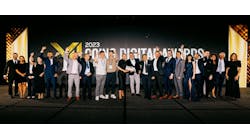“As an automation specialist, I thought IoT wasn’t really something new, but it is. The enabling technologies are not automation, but they’re built on the automation backbone.” Deloitte’s Paul Dunn discussed the unique challenges and opportunities facing the chemical industry.
The chemical industry has done very well the past few years, perhaps the best years in its history. But recently, even as more facilities come online, demand has faltered, margins have stalled or eroded, and merger and acquisition activity has increased.
“There’s less pull from automotive, less demand from China as it becomes more self-sufficient as part of its China 2025 initiative, and oil prices have been dropping,” said Paul Dunn, specialist leader, digital supply network, process industries, Deloitte, who kicked off the Chemical Industry Forum at Automation Fair this week in Philadelphia.
“Add to that changes in demand due to customers seeking sustainability and increased protectionism, with tariffs poised to rise the first of the year, and you have a lot of volatility in the market,” Dunn said. “This affects how the chemical industries will be structured and grow, and sharpens the focus on digital technologies.”
Chemical companies are using digitalization to clean up their supply chains, streamline business processes and improve production, but “they’ve pulled that well dry,” Dunn said. Now they need to focus on new areas like developing talent, enabling collaboration and innovation, reshaping their organizations and building new business models.
Innovation lagging
Saying he’s risking the crowd taking umbrage, Dunn said, “The chemical industry now lags in digital technology. It’s used it for control, safety and yield, but it needs technologies that unleash innovation and unlock gains.”
IoT, augmented and virtual reality (AR/VR) and cloud analytics “don’t touch a loop,” Dunn said. “But we all need to understand them. As an automation specialist, I thought IoT wasn’t really something new, but it is. The enabling technologies are not automation, but they’re built on the automation backbone.”
Sherwin Williams is selling “lifestyle” and “decoration,” not paint. “Social engagement has built a brand with new, intrinsic value,” Dunn said. “Companies like DuPont and Evonik either have a niche position or must play the boom and bust cycles. Some natural owners, like LyondellBasell, own the supply chain.” These companies need safety and training, more focus on operational improvement and the supply chain, and to monitor the competition.
“Today, the industry is sitting on cash and wants to invest, but doesn’t know where,” Dunn said. “Many throw all their information into a data lake, but aren’t getting anything out. How can they use that data as information?”
Leverage existing infrastructure
Large, established companies like many in the chemical industry have existing software systems that can be built upon to accelerate innovation. These include systems of record (SOR): established packaged applications or legacy homegrown systems that support transaction processing and manage the organization’s critical master data, such as ERP and resource management systems. These systems may take seven (or 20!) years to implement, last 10-20 years, and take 6-12 months to make a change, Dunn said.
They also have systems of differentiation (SOD): applications that enable unique company processes or industry-specific capabilities, such as control systems and MES applications. These take two to three years to implement, last five to 10 years, and take three to six months to change.
“You need systems of innovation,” Dunn said. These are new applications that are built on an ad hoc basis—on top of existing SOR and SOD—to address new business requirements or opportunities, such as Industrial IoT and AR/VR implementations.
“The systems of innovation are where digitalization is starting to play,” Dunn said. “These systems take only months to develop, and don’t last long in a single form. They’re developed by teams to bring the right information at the right time to the right people, like a control system for people to use to do their jobs better and more efficiently.”
Seize opportunities
To find opportunities, bear in mind that, “Most organizations are like loops on manual—operators are doing experiments on your products every day,” Dunn said. “That information is valuable.”
For example, in one case, operators knew the setpoints were wrong. A 7% offset would increase production 27% and reduce downtime 60%. “The truth was in the data,” Dunn said. “A two-month project locked it in, and the plant saw a 20% improvement in productivity.”
Conventional projects often make a big improvement, then plateau and even start to decline. “Small projects can lead to gains that correct that natural decline and further improve results,” Dunn said.
A digital transformation mindset must be maintained to transform businesses, realize value and deliver outcomes. “Understand the technology ecosystem,” Dunn said. Look for opportunities to create value, not just add technology. Leverage expertise, use multidiscipline teams, and tailor solutions to your business. Build digital skills over time, and don’t forget to minimize cyber risk.
“Think big, start small and scale fast,” Dunn said. Define the vision and develop foundational digital capabilities. Launch value-driven pilots of key use cases at select facilities. Build a portfolio and scale solutions across the enterprise.
“I work with analytics teams, production and automation software applications. You need a team—if you use just IT, you’ll fail. If you use just automation, fail. You need a cross-discipline team,” Dunn added. “As people with automation backgrounds, it’s very important to open ourselves up. Leadership and expertise in these technologies is not available—this is the wild west.”
It’s up to us to tame it.
The editors of Control are on-site at Automation Fair 2018 to bring you breaking news, innovations and insights from the event. Once the event is over, they will put together a report featuring the top news. Pre-order your copy today.
[javascriptSnippet]





